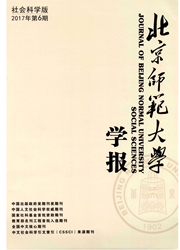

 中文摘要:
中文摘要:
自1994年美国《精神障碍诊断与统计手册》第四版公布以来,关于创伤后应激障碍临床症状表型模型的争议一直存在。从最初的3维模型(闯入、回避与情感麻木以及高唤起)到最新的7维混合模型(闯入、回避、负性情绪、快感缺失、外化行为、焦虑性唤起以及精神痛苦性唤起),创伤后应激障碍临床症状表型模型研究已在持续争议中取得了长足进展。为了清晰地反映这一研究进展,我们首先勾勒了20余年来该领域研究的大致脉络,并从基于美国《精神障碍诊断与统计手册》第四版与第五版的表型模型研究两个方面进行了综述,讨论了DSM-IV框架下的两个4维模型和一个5维模型的实证支持、结构比较、外部效度以及它们的心理病理机制,同时探讨了DSM-5框架下两个4维模型、一个5维模型、两个6维模型和一个7为模型的结构比较、各自的实证支持和外部效度;之后又讨论了现有研究在样本选取、评估工具使用、研究设计以及心理测量学等方面存在的局限;最后指出了该领域未来研究的方向,希望能够弥补现有研究设计的不足,探讨核心症状,通过研究找出最优模型,推动其向临床实践的转化。
 英文摘要:
英文摘要:
Since the fourth edition of the Diagnostic and Statistical Manual of Mental Disorders(DSM-IV)published in 1994,there has been an intense debate on the phenotypic model of posttraumatic stress disorder(PTSD)symptom dimensionality.From the initial tripartite DSM-IV model(intrusion,avoidance and emotional numbing,and hyperarousal)to the latest DSM-5based seven-factor hybrid model(intrusion,avoidance,negative affect,anhedonia,externalizing behaviors,anxious arousal,and dysphoric arousal),studies on the phenotypic model of PTSD symptom dimensionality have made substantial progress in recent two decades.The current study began by outlining the previous studies in this field,and then reviewed the findings of the phenotypic model of DSM-IVand DSM-5PTSD symptom dimensionality respectively.After that,limitations with previous studies,in terms of sampling,assessment,design,and psychometrics were discussed.The paper finally indicated the directions for future studies.
 同期刊论文项目
同期刊论文项目
 同项目期刊论文
同项目期刊论文
 期刊信息
期刊信息
